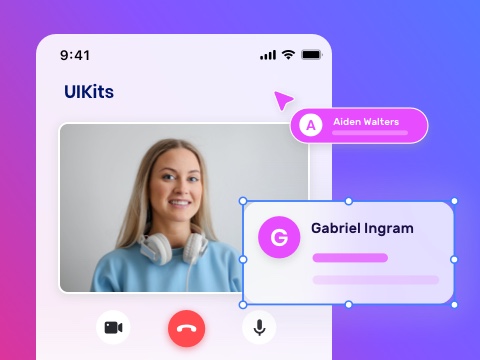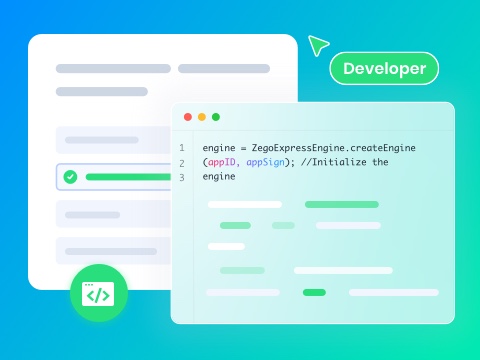Creating exciting worlds and designing challenging levels for unforgettable gameplay begins with a vision. While many enjoy playing games, few understand the creative minds that shape them. So, it helps to explore the role behind the screen to appreciate what goes into your favorite titles. For anyone curious, understanding everything involved can provide valuable insight. Therefore, let’s break down what a video game designer really does in this deep dive.
What is a Video Game Designer?
Behind every captivating game lies the creativity and direction of someone who imagines the entire experience from scratch. So, it is natural to wonder what is a game designer and how important that role is. Instead of writing code or producing art, the person in this role focuses on designing gameplay mechanics. Moreover, these include everything from storylines and rules to characters and player interactions.
Because of that, they serve as the foundation of any game development project. As the process continues, they collaborate closely with everyone involved to make sure every element fits their original vision. So, rather than just playing games, they shape how games feel, flow, and function.
History of Video Game Designing
Long before modern consoles and high-end graphics, the process started with simple ideas. Then, these concepts took life through basic code and pixel art. Back in decades of the ’70s and ’80s, individual creators often took on multiple roles. To get the work done, they became designers, coders, and even producers of sounds all by themselves. As technology evolved, so did the complexity of games with it.
That led to the separation of roles and the birth of dedicated game designer occupations. Over the years, new tools and genres have transformed this creative field into a structured profession. Because of that shift, today’s designers focus entirely on gameplay experiences. Moreover, they do that while working with larger and more specialized teams.
What Does a Video Game Designer Do?
To truly understand the value they bring, looking at what they handle on a daily basis will help a lot. Furthermore, doing so answers queries like “what does a game designer do?” in proper terms. Because their role involves both creativity and strategy, they often juggle multiple tasks that shape the entire game experience. Summarized below is what they typically do:
- Develop Gameplay Concepts: They brainstorm core mechanics, challenges, and features that define how the game feels.
- Create Storylines and Characters: Crafting narratives, character arcs, and dialogue that keep players engaged is also their job.
- Design Levels and Environments: Designers even map out layouts and pacing for each stage to ensure balance and excitement.
- Build Detailed Design Documents: When structured plans that guide artists, programmers, and other developers are needed, designers do that.
- Test and Adjust Gameplay: The task of playtesting frequently and making changes based on feedback to improve player satisfaction is part of their routine.
Video Game Designer vs Video Game Developer
Although both roles contribute a lot to the creation process, their tasks and skill sets differ. While the designer shapes the vision and how the game feels, the developer turns that into a working product via code. Due to these distinctions, many people often confuse the two. So, to clear things up on what does a video game designer do, here’s a detailed comparison:
| Aspect | Video Game Designer | Video Game Developer |
|---|---|---|
| Main Focus | Creates gameplay ideas, mechanics, and storylines | Writes code to build the game and make it function |
| Core Skillset | Creativity, storytelling, and level design | Programming, debugging, and software development |
| Tools Used | Design documents, flowcharts, and level editors | Game engines (like Unity and Unreal), programming languages |
| Role in Game Development | Plans how the game looks and plays | Builds the technical structure to support gameplay |
| Collaboration | Works with writers, artists, and developers | Collaborates with designers and artists to bring concepts to life |
| Stage Involvement | Active from the beginning through to the final tweaks | Heavily involved during the development and bug-fixing phases |
| End Goal | Deliver a fun, balanced, and engaging player experience | Deliver a working, smooth-running, and technically sound game |
Video Game Designer Skills
Since the role demands both imagination and structure, anyone who steps into this field needs to balance creativity with problem-solving. Moreover, knowing this is important for those interested in finding out how to become a game designer. As designers turn abstract ideas into playable realities, they have to rely on a wide range of abilities every day. Hence, here are the skills to succeed in this dynamic career:
- Creative Thinking: Imagining original gameplay mechanics, characters, and stories.
- Communication: Explaining ideas clearly to developers, artists, and other team members.
- Storytelling: Building engaging narratives that connect with players.
- Attention to Detail: Catching design flaws and improving player experience.
- Teamwork: Collaborating smoothly with multiple departments during development.
- Problem-solving: Fixing gameplay issues or balancing levels effectively.
- Technical Familiarity: Understanding how game engines and mechanics function.
- Player Empathy: Designing with the player’s enjoyment and challenges in mind.
How to Become a Video Game Designer
As the industry continues to grow rapidly, a lot more people are eyeing it with interest. Moreover, they want to turn their passion for games into a professional career. However, entering this creative field takes planning, learning, and consistent effort. Therefore, here are the steps to follow for those thinking about how to become a video game designer:
1. Start with a Strong Passion for Games
Play a wide range of titles and study what makes each one enjoyable or unique. Understanding different genres and gameplay styles helps you develop a better design perspective. Moreover, it lets you decide which sort of masterpieces you want to conceptualize.
2. Learn the Basics of Game Design
Study core principles ranging from gameplay balance and level structure to player engagement. These fundamentals form the foundation for building meaningful and entertaining experiences. Additionally, try your hand at different sorts of design techniques to get the hang of them.
3. Get Formal Education or Training
Consider degrees or courses in game design, interactive media, or related fields. Structured learning environments can guide you through both theory and hands-on practice. Along with that, they can prove helpful in finding a foothold in the industry.
4. Practice with Design Tools
Software like Unity and Unreal Engine needs to be at your fingertips to build small projects. As you experiment with them, it gives you confidence and a lot better understanding of how games work. Furthermore, mastering one of these will allow you to work much more easily in the future.
5. Create a Strong Portfolio
Showcase original game concepts and prototypes of your own to demonstrate your skills. A well-organized portfolio can make a powerful impression on potential employers or collaborators. Moreover, it also lets you go back to your previous ideas and get more inspiration.
6. Collaborate on Game Projects
Join game jams or team up with other creators to gain real-world experience. Additionally, working with others helps you improve your communication and learn new design approaches. Along with that, collaboration can take care of the parts of the process where your grip is not that strong.
7. Apply for Internships or Entry-Level Roles
Look for opportunities in studios where you can learn from experienced professionals. Moreover, these roles often serve as stepping stones toward more advanced positions in the industry. Additionally, getting to a designer or company you admire can prove a big boost.
8. Keep Improving and Learning
A lot more effort in staying updated with industry trends and continuously working on refining your design abilities is vital. In addition to that, consistent growth ensures that your skills remain relevant in this ever-evolving field. Furthermore, staying at the top of your game also allows you to capture a moment when presented.
How ZEGOCLOUD Helps Video Game Designers Bring Interactive Ideas to Life
Giving shape to your concepts requires the use of robust tools to enhance interactivity and engagement. Hence, ZEGOCLOUD offers specialized solutions tailored to the gaming industry. Their suite of APIs and SDKs enables designers to integrate real-time communication features effortlessly. Basically, its aim is to help out users wondering how do I become a game designer by providing the right set of tools.

One standout offering is ZEGOCLOUD’s Social Gaming Solution, which you can use to build online games with ease. Furthermore, these games can come with built-in voice chat and live streaming capabilities at a low latency of 200ms. Moreover, it will allow players to interact in real time and foster a more immersive gaming experience with a 99.99% message delivery rate and GDPR compliance.
Additionally, their robust infrastructure can handle over 10 million concurrent connections to provide stability for large-scale multiplayer games. For those wondering what career cluster is video game designer is in, ZEGOCLOUD’s solutions offer features like in-app chat, voice and video calls, and interactive live streaming. Overall, these tools not only enrich the gaming experience but also contribute to increased user retention and engagement.
Conclusion
In summary, designing a video game involves creativity, planning, and the right set of skills to bring ideas to life. From shaping gameplay to collaborating with developers, designers play a key role in game development.
With platforms like ZEGOCLOUD, they can now enhance interactivity using real-time communication tools. By combining strong design principles with ZEGOCLOUD’s powerful solutions, video game designers can create more immersive and socially connected gaming experiences.
Read more:
FAQ
Q1: Is video game design a good career?
Yes, for those passionate about gaming and storytelling, video game design can be a rewarding career. It offers creative fulfillment and opportunities in a fast-growing industry. However, it can be competitive and demanding, so continuous learning and hands-on experience are key.
Q2: What skills do video game designers need?
Key skills include creativity, communication, storytelling, problem-solving, and familiarity with game engines and design tools. Understanding player behavior, game balancing, and interactive systems is also crucial for designing engaging game experiences.
Q3: Do video game designers need to know how to code?
Not always. While coding isn’t mandatory for all designers, understanding basic programming concepts or scripting (like in C#, Python, or Lua) is a big advantage. It helps designers better communicate with developers and implement gameplay features directly in some engines.
Q4: How much do video game designers make?
Salaries vary by experience and region, but on average, entry-level video game designers in the U.S. earn around $55,000–$70,000 annually, while senior designers can make over $100,000. Larger studios often offer higher pay than indie companies.
Let’s Build APP Together
Start building with real-time video, voice & chat SDK for apps today!










